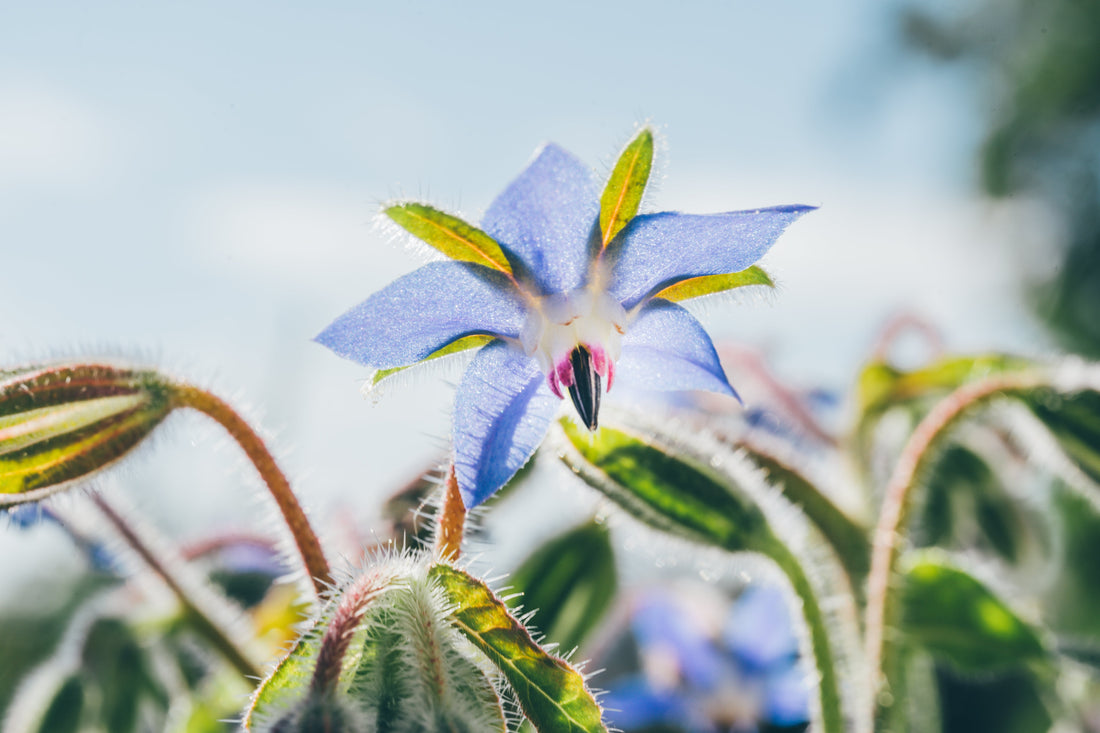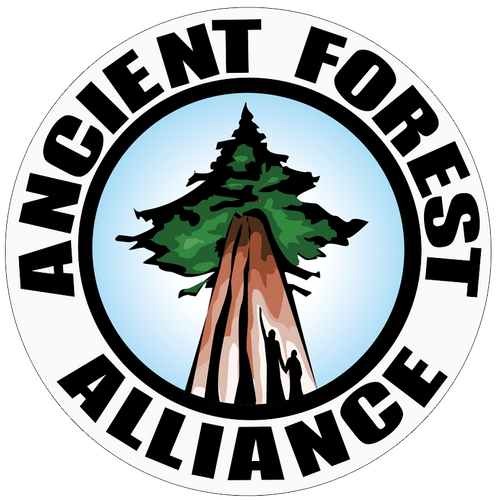
From Field to Table: The Many Wonders of Wild Borage
Share
From Field to Table: The Many Wonders of Wild Borage
Kootenay Wildcrafting Co.
Meet Borage: The Starflower of the Wild
Borage (Borago officinalis), also known as starflower, is a vibrant, edible herb with striking blue, star-shaped flowers and fuzzy leaves. Native to the Mediterranean but naturalized in many regions, including British Columbia, borage thrives in sunny, well-drained soils—often found in gardens, meadows, and along roadsides.
Identifying & Harvesting Borage Safely
- Leaves: Hairy, oval-shaped, with a cucumber-like scent.
- Flowers: Brilliant blue (sometimes pink), five-petaled stars.
- Stems: Thick, hollow, and covered in fine bristles.
When foraging:
- Only harvest from clean, pesticide-free areas.
- Avoid plants near roadsides or industrial zones.
- Pick young leaves and flowers for the best flavor.
Preserving borage:
- Dry leaves and flowers for tea.
- Freeze leaves in ice cubes for drinks.
- Infuse flowers in vinegar or honey.
The Incredible Benefits of Borage
Borage has been cherished for centuries in traditional medicine and cooking. Here’s why it’s worth adding to your wild pantry:
1. Rich in Gamma-Linolenic Acid (GLA)
- The seeds and leaves contain GLA, an omega-6 fatty acid that supports skin health, reduces inflammation, and may ease hormonal imbalances.
2. Natural Anti-Inflammatory
- Traditionally used to soothe arthritis, respiratory issues, and skin irritations like eczema.
3. Supports Adrenal Health
- Known as an "adrenal tonic," borage may help combat stress and fatigue.
4. Diuretic & Detoxifying
- Promotes kidney function and helps flush excess fluids.
5. Culinary Delight
- Leaves taste like cucumber—great in salads, soups, and drinks.
- Flowers add a splash of color and mild sweetness to desserts and beverages.
How to Use Borage: Tea, Powder, or Cooked?
1. Borage Tea (Leaves & Flowers)
- Best for: Relaxation, adrenal support, mild diuretic effects.
- How to make: Steep 1 tsp dried leaves or flowers in hot water for 5-10 mins.
2. Raw Borage (Young Leaves & Flowers)
- Best for: Fresh nutrients, culinary use.
- How to use: Add to salads, garnish dishes, or blend into smoothies.
3. Cooked Borage (Mature Leaves & Stems)
- Best for: Reducing bitterness in older leaves.
- How to use: Sauté like spinach, add to soups, or bake into fritters.
4. Borage Powder (Dried & Ground Leaves)
- Best for: Concentrated nutrients, adding to capsules or smoothies.
Which Part of the Plant to Use?
- Leaves: Best for tea, cooking, or fresh eating (young leaves are tender).
- Flowers: Ideal for garnishes, infusions, and medicinal syrups.
- Roots & Seeds: Less commonly used; seeds are pressed for oil (GLA source).
Foraging Borage in British Columbia
In BC, borage often escapes cultivation and grows wild in sunny, disturbed soils. Look for it in:
- Coastal meadows
- Farm edges
- Abandoned gardens
Sustainable Harvesting Tips:
- Take only what you need, leaving enough for pollinators (bees love borage!).
- Avoid uprooting—harvest leaves and flowers sparingly.
Final Thoughts: A Versatile Wild Ally
Whether sipped as tea, sprinkled fresh on a salad, or cooked into a nourishing meal, borage is a powerhouse of flavor and wellness. As a forager in BC, I treasure this plant not only for its beauty but for its many gifts to both body and palate.
Happy foraging! 🌿✨

